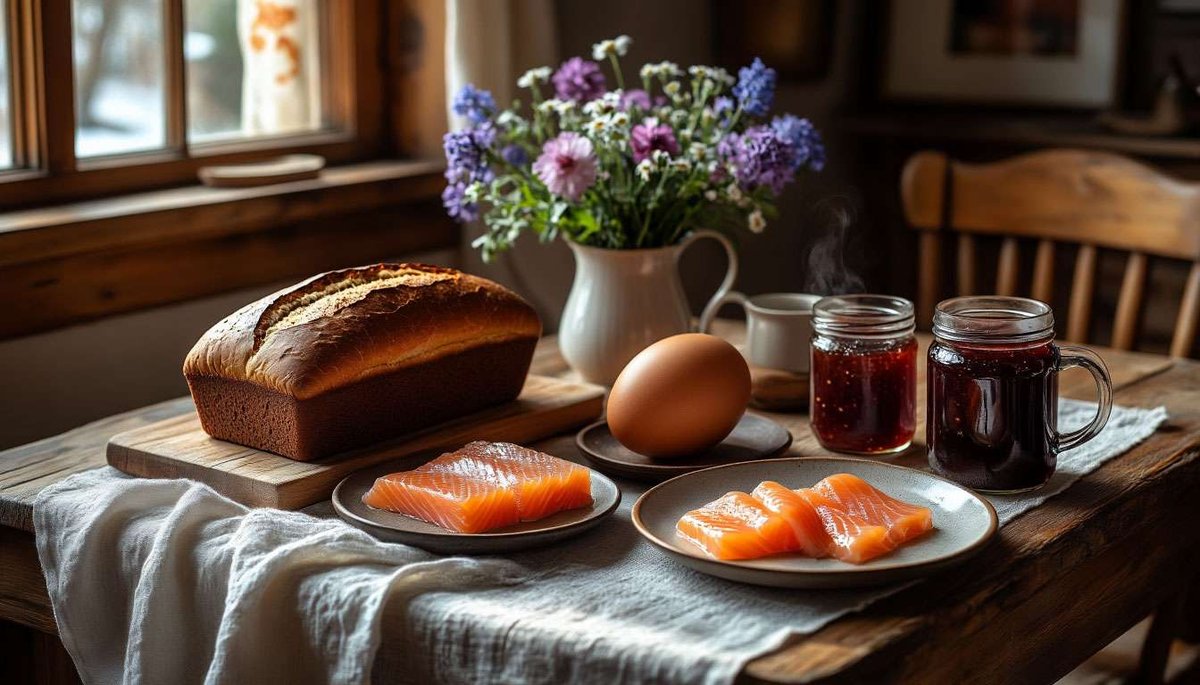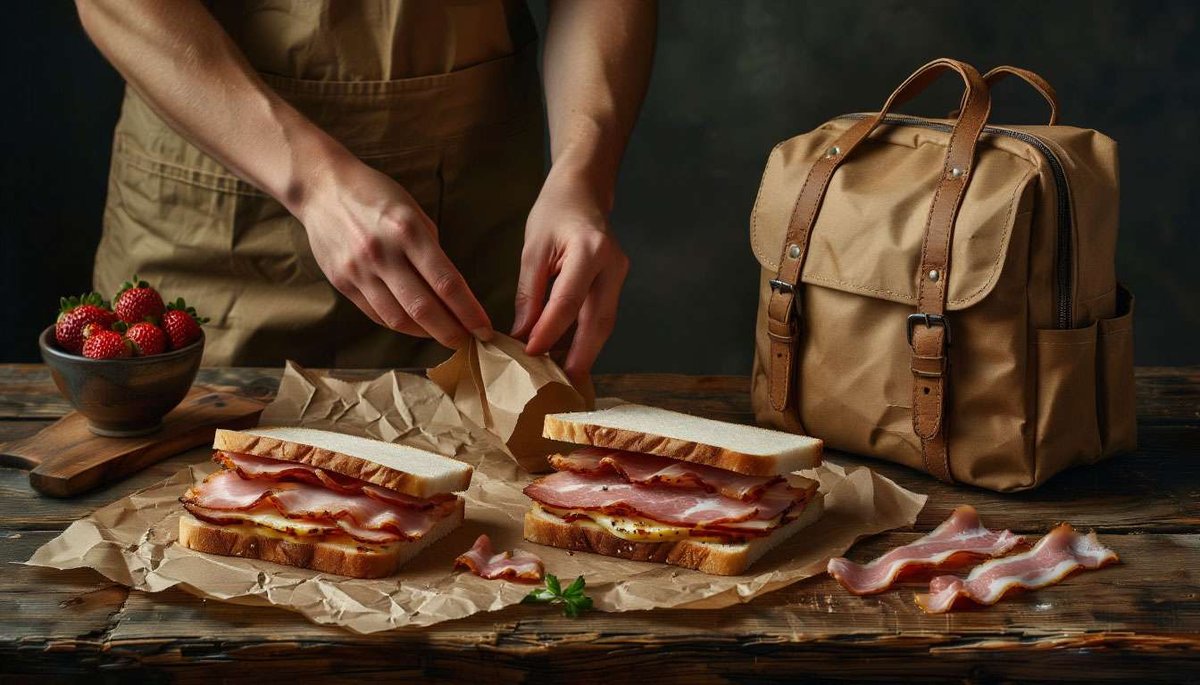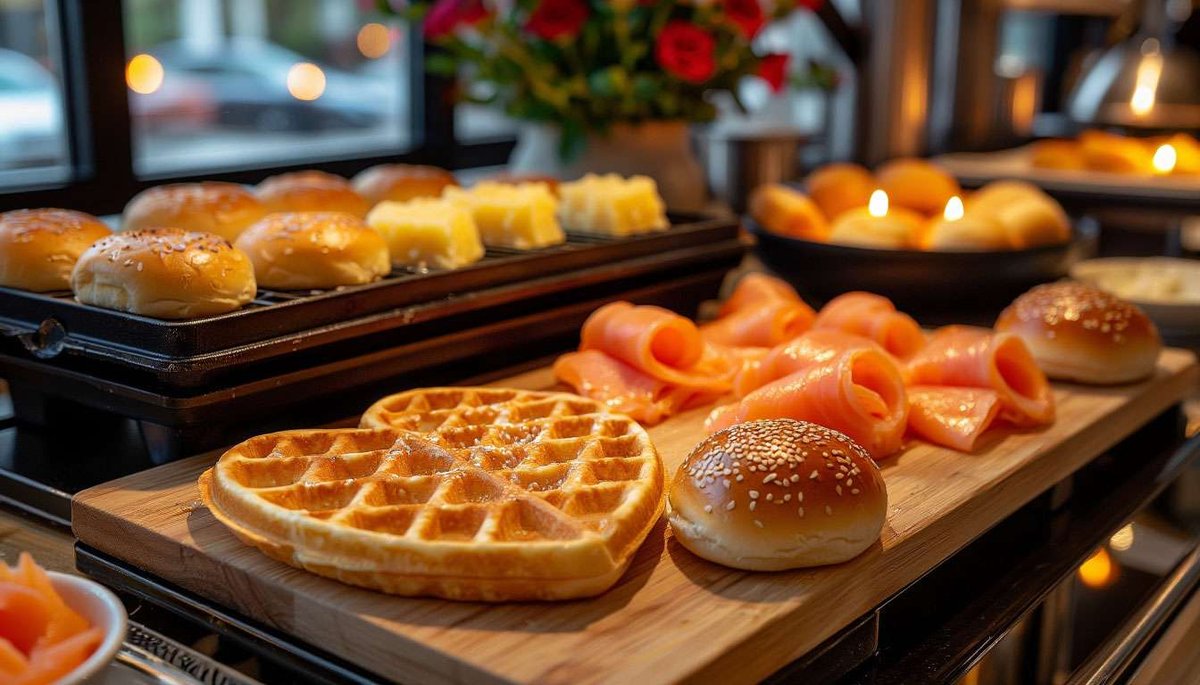Breakfast as a cultural code: from a hotel buffet to a homemade Matpakke

"A hearty breakfast is the key to a good day" is a phrase you will hear in every Norwegian family. The climate and active lifestyle require calories in the morning, so colourful hotel buffets and homemade Matpakke sandwich lunches are an integral part of the cuisine. Let's take a look at what people put on their plates in the morning, how a sandwich with brunost saves money, and where tourists can try the best Norwegian breakfast.
What do Norwegians eat for breakfast at home on weekdays?
The morning starts with a cup of svart kaffe filter coffee and a slice of wholemeal Grovt brød bread. The bread is topped with one of the following: smoked or marinated salmon, brown cheese (Brunost), hard Jarlsberg cheese, a boiled egg or cloudberry jam. Oatmeal porridge with berries and honey and skyr yoghurt with muesli are also popular. The main rule is to minimise added sugar and maximise natural protein and fibre to keep you going until your mid-morning coffee break.
What is Matpakke and why is this sandwich part of the national identity?
Matpakke literally means "food package." Every schoolchild and office worker puts 2-3 open sandwiches (pålegg) in a thin waxed matpapir insert in the morning, wraps it up and takes it with them. The classic filling is cheese + ham, salmon + egg, Brunost + jam. The system is over 100 years old: it saves money, time on cooking and allows you to control what you eat. At 12:00, the whole country takes a lunsjpause; getting your Matpakke means "being one of the locals" among Norwegians.

What do "royal" breakfasts look like in hotels and how much do they cost?
The frokostbuffet buffet at the Thon, Scandic and Clarion chains is included in the room price. On long tables, you will find five types of bread, smoked and marinated salmon, herring in three sauces, 4–6 types of cheese, eggs, salads, porridge, yoghurt, fresh vegetables, fruit and, of course, a waffle iron. Tourists should try the combination of a warm waffle with Brunost and strawberry jam. The average price of breakfast for non-guests is 200–250 NOK, but one serving will easily replace lunch.

Where to find the best breakfasts in Norway (addresses for foodies)?
- Oslo: Kulturhuset — a city "people's breakfast" with skyr porridge (109 NOK).
- Bergen: Godt Brød Bryggen — cinnamon rolls + fjord view, salmon sandwich (85 NOK).
- Trondheim: Bakklandet Skydsstation — homemade bread, Rueslåtten farm cheeses, hand-drip coffee.
- Tromsø: Smørtorget — heart-shaped waffles with rømme ice cream, fresh fjord salmon.
How to put together the perfect Matpakke for a day of sightseeing?
Take a thin lompe flatbread – it will replace bread and won't crumble. Spread with cream cheese, add lettuce leaves, a slice of Jarlsberg and two slices of smoked salmon, finish with cucumber and a pinch of dill. Wrap it in matpapir or beeswax so the sandwich doesn't get soggy. Add a small container of berries or nuts and a flask of tap water (it's free and safe). The cost of such a Matpakke from the Rema 1000 supermarket is around NOK 35, while a café sandwich will cost NOK 90–110.
What dietary and vegan breakfast options are available?
Shops offer gluten-free bread (glutenfritt brød) and coconut yoghurt. Vegans fill their Matpakke with hummus, avocado slices and sun-dried tomatoes. The Espresso House and Kaffebrenneriet coffee chains sell oatmeal with almond milk and berries. Hotel buffets will feature oat flakes, fruit, soy milk and lactose-free cheese.
Breakfast is when Norway reveals itself to visitors in detail: in the aroma of fresh bread, the glisten of smoked salmon and the sweet note of brunost. And the matpakke, a modest sandwich wrapped in wax paper, reminds us that even the richest country values simplicity and mindful eating. Put together your own northern lunch box, throw it in your backpack and head for the fjord: the taste of Norway will accompany you, layer by layer, like in a perfect åpne smørbrød.





2 comments
Log in to leave a comment